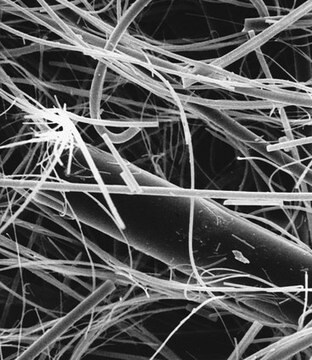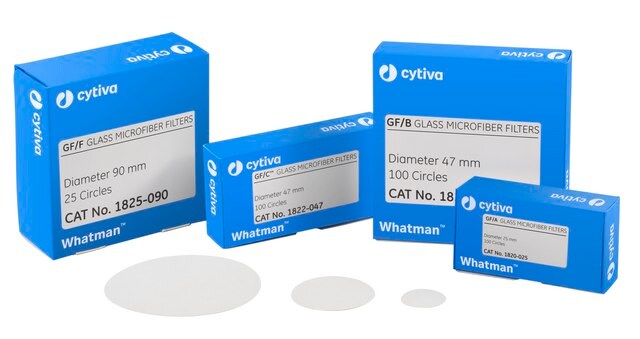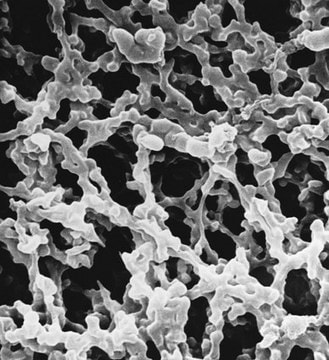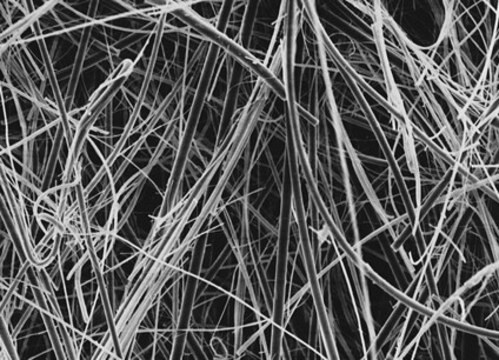AP4001000
Filtri a membrana in fibra di vetro, pori da 0,7 μm
Millipore, filter diam. 10 mm, hydrophilic, thickness 475 μm
Sinonimo/i:
Glass Fiber Filter without binder
About This Item
Prodotti consigliati
Materiali
glass fiber membrane
plain filter
white filter
Descrizione
0.7 µm pore size, hydrophilic glass fiber, 10 mm diameter
Caratteristiche
hydrophilic
Produttore/marchio commerciale
Millipore
Parametri
>300 mL/min-cm2 water flow rate (at 27 in Hg)
550 °C max. temp.
Diametro
10 mm
Diam. filtro
10 mm
Spessore
475 μm
Dimensione pori
0.7 μm pore size
90 % porosity
Condizioni di spedizione
ambient
Cerchi prodotti simili? Visita Guida al confronto tra prodotti
Descrizione generale
Millipore fibrous disc filters are available in a wide range of flow rates and throughput capacities. Our Glass Fiber filters are available with or without binder resins and can be sterilized by EO, gamma, or autoclave (121 °C at 1 bar).
Glass Fiber Filters with Binder Resin:
Millipore filters with binder resin have superior wet strength and are excellent for qualitative analysis and prefiltration, especially for heavily contaminated liquids. They are also widely used for clarification of aqueous solutions.
Type AP15
•Lowest dirt-holding capacity
•Recommended prefilter for 0.2 to 0.6 µm filters
Type AP20
•Lower retention, higher dirt-holding capacity than AP15 filters
•Recommended prefilter for 0.8 to 8.0 µm filters
•Use upstream to protect type AP15 filters
Type AP25
•Added thickness yields same retention and greater dirt-holding capacity as AP20
•Recommended prefilter for 0.9 to 8 µm filters, especially for proteinaceous and heavily contaminated liquids
•Use upstream to protect type AP15 filters
Glass Fiber Filters without Binder Resin:
The filters without binder resin retain their structural integrity without weight loss when heated up to 500 °C and can therefore be used in gravimetric analysis as well as for the filtration of hot gases.
Type APFA
•Retains fine particles with good efficiency, even at high flow rates
•Recommended for monitoring wastewater and collecting suspended particles in gases (e.g., fumes from chimneys)
•Use in biochemical applications (e.g., collection of cells and filtration of protein or nucleic acid precipitates)
Type APFB
•Higher mechanical strength when wet and greater loading capacity than type APFA filters
•Use for liquid clarification, quantification of solids in suspensions of fine particles, and scintillation counting
Type APFC
•Greater retention, especially for fine particulate and microorganism removal than type APFA filters
•Use for determining total suspended solids in drinking water
•Use for filtering proteins or nucleic acid TCA precipitates and for collecting cells and microorganisms
Type APFD
•Thick filter with high flow and low retention
•Use for clarifying suspensions containing particulates greater than 1.0 µm
Type APFF
•Use for filtering extremely fine precipitates such as protein, nucleic acids, or serum precipitates
•Recommended for USEPA method 1311 for TCLP analysis
Type AP40
•Recommended for Standard Methods Total Suspended Solids 2540D
•Recommended for USEPA method 1311 for TCLP analysis
•Maintains structural integrity without weight loss when ignited to 550 °C (1022 °F) after sample filtration
•Recommended for determining volatile suspended matter in wastewater and industrial effluents
Applicazioni
- Total Suspended Solids 2540D
- EPA method 1311 for TCLP analysis
- Determining volatile suspended matter in wastewater and industrial effluents
- Stack Testing for PFAS via OTM-45
Certificati d'analisi (COA)
Cerca il Certificati d'analisi (COA) digitando il numero di lotto/batch corrispondente. I numeri di lotto o di batch sono stampati sull'etichetta dei prodotti dopo la parola ‘Lotto’ o ‘Batch’.
Possiedi già questo prodotto?
I documenti relativi ai prodotti acquistati recentemente sono disponibili nell’Archivio dei documenti.
Il team dei nostri ricercatori vanta grande esperienza in tutte le aree della ricerca quali Life Science, scienza dei materiali, sintesi chimica, cromatografia, discipline analitiche, ecc..
Contatta l'Assistenza Tecnica.



